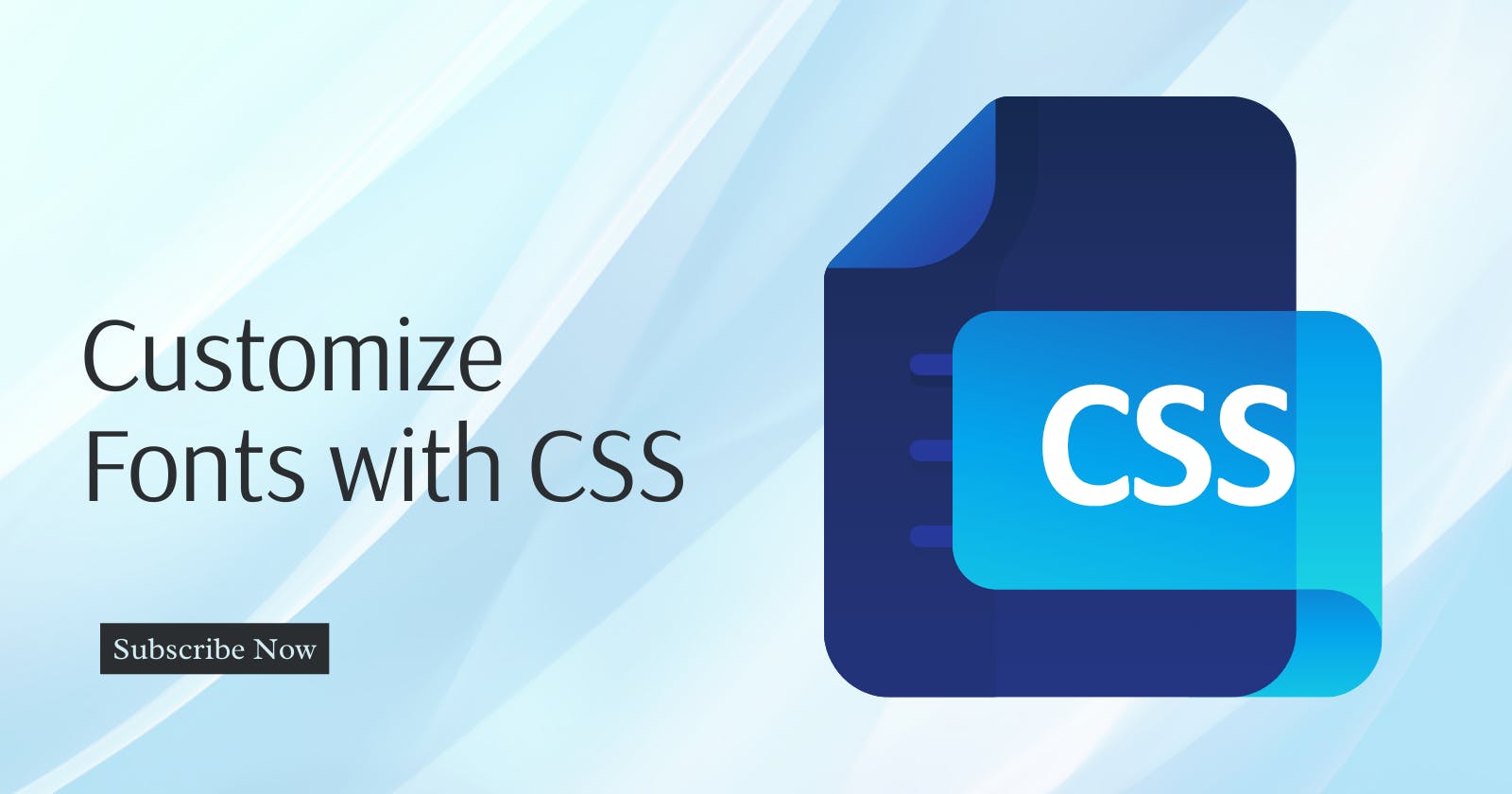Customizing fonts in CSS is one of the essential skills for web designers and developers. It allows you to give your web pages a unique and personalized look while ensuring readability and consistency.
1. Font Family
The font-family property is fundamental to customizing fonts in CSS. It specifies the font of an element's text. You can define a font family by name or use a generic font family.
/* Using a specific font family */
font-family: "Arial", sans-serif;
/* Using a generic font family */
font-family: serif;
font-familyallows you to specify multiple font families, separated by commas. Browsers will use the first available font.
font-family: "Helvetica", "Arial", sans-serif;
- When defining font families with spaces or special characters, enclose them in double-quotes.
2. Font Size
Controlling the font size is crucial for readability and aesthetics. The font-size property determines the size of the text.
font-size: 16px; /* Using pixels */
font-size: 1rem; /* Using relative units */
font-size: 1.2em; /* Using em units */
- You can use different units (e.g., pixels, em, rem) to specify font size. Relative units (em and rem) are often preferred for responsive design.
3. Font Weight
Font weight specifies how bold or thin the text appears. You can use the font-weight property to set this attribute.
font-weight: normal; /* Normal (400) */
font-weight: bold; /* Bold (700) */
- Common values for
font-weightarenormal,bold,bolder, andlighter, but you can also use numeric values from 100 to 900. For example
font-weight: 600;
4. Font Style
You can control whether text is displayed in an italic style using the font-style property.
font-style: normal; /* Regular text */
font-style: italic; /* Italic text */
5. Text Decoration
The text-decoration property allows you to add lines or other decorations to text, such as underlines or strike-throughs.
text-decoration: none; /* No decoration */
text-decoration: underline; /* Underline text */
text-decoration: line-through; /* Strike through text */
6. Font Variant
The font-variant property lets you control text rendering, including options like small caps.
font-variant: normal; /* Default */
font-variant: small-caps; /* Render text in small caps */
7. Line Height
Adjusting the line height (or line spacing) is vital for readability. The line-height property sets the space between lines of text.
line-height: 1.5; /* Relative to the font size */
line-height: 24px; /* Using specific units */
- A good practice is to define the line height relative to the font size (e.g.,
1.5) to ensure consistency across various text sizes.
8. Text Transform
The text-transform property allows you to control the capitalization of text.
text-transform: uppercase; /* Uppercase text */
text-transform: lowercase; /* Lowercase text */
text-transform: capitalize; /* Capitalize the first letter of each word */
9. Web Fonts
To use custom fonts not available on the user's device, you can employ web fonts, such as Google Fonts or Adobe Fonts. You include these fonts in your CSS with the @font-face rule.
@font-face {
font-family: 'YourFontName';
src: url('your-font.woff2') format('woff2');
font-weight: normal;
font-style: normal;
}
body {
font-family: 'YourFontName', sans-serif;
}
- Be sure to provide font files in various formats (e.g., WOFF, WOFF2, TTF, EOT) for cross-browser compatibility.
10. Font Properties Shorthand
To streamline your CSS and improve readability, you can use the font property to specify multiple font-related properties in a single line.
font: font-style font-variant font-weight font-size/line-height font-family;
Here's an example:
font: italic small-caps bold 18px/1.5 "Arial", sans-serif;
Customizing fonts with CSS is a powerful way to enhance the visual appeal and readability of your web pages.
When you master these CSS properties and techniques, you can create unique, professional, and visually engaging websites. Remember that font choices play a significant role in shaping the overall design and user experience of your site.
